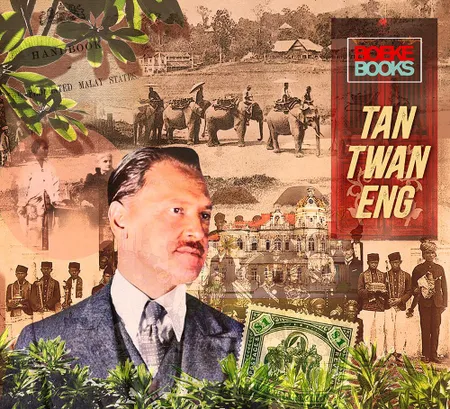IT happens every now and then: a book comes my way that transports me to such wonderful worlds that I feel a sense of loss when I reach the last page. Then I start watching the shelves: when is this author going to deliver another book?
This is how I felt after All the Light We Cannot See, Anthony Doerr's award-winning second novel. And he made me wait seven years for Cloud Cuckoo Land. Between Anne Michaels's Fugitive Pieces and The Winter Vault, 13 years dragged by.
In 2011, in my imagination I was high up in the Cameron Highlands in a beautiful garden in Malaysia, delicately laid out by a Japanese gardener, and I walked through that garden with the characters, trying to make sense of a world that could be equally cruel and beautiful. The book that took me on that journey was The Garden of Evening Mists by Tan Twan Eng.
This author was born in Malaysia and writes in English; he is qualified as an attorney (and, incidentally, completed a master's degree in law at the University of Cape Town) but has impressed since his debut novel, The Gift of Rain (2007). It's a beautiful book, but 2011's Garden of Evening Mists touched me much more deeply and stays with me. And yes, 13 years passed before I saw Tan's name on the spine of a book again.
Lees hierdie artikel in Afrikaans:
The House of Doors was available at the end of 2023 and, like his first book, it made the Booker longlist (The Garden of Evening Mists was shortlisted for the 2012 prize).
The action in The House of Doors takes place over several decades: the main character, British expat Lesley Hamlyn, receives a parcel in 1947 at her home on the farm Doornfontein, outside Beaufort West. This is a book: The Casuarina Tree, a collection of short stories by Somerset Maugham.
From there, the reader travels to Penang, a state in Malaysia where Lesley grew up and lived with her much older husband, Robert, in 1921; “Willie" Somerset Maugham, an old friend of Robert's, lived with the Hamlyns for two weeks and brought his secretary, Gerald Haxton, with him.
The third setting for this book is Penang in 1910. Lesley tells Willie Maugham the story of Ethel Proudlock and interweaves it with her own story of the breakup of her marriage and the relationship she had with a Chinese man in that year.
The “house of doors" of the title refers to a building in Penang but it is also a metaphor for the foundation of the novel. Tan weaves several stories together, opening a series of metaphorical doors which lead to further narratives and sketches. Through all the stories runs a thread of intertextuality that is subtly and cleverly presented.
Maugham is a real character and Tan retains certain facts about his life. In 1921, he travelled with Haxton through the Federated Malay States and stories in The Casuarina Tree were inspired by his experiences with British inhabitants of the eastern colonies. The fictional character Lesley Hamlyn tells Maugham the true story of Proudlock and Maugham adapts it into “The Letter" in The Casuarina Tree.
That piece of intertextuality is easily recognisable but Maugham fans will be able to spot many more references. For example, there is a “Mrs Hamlyn" in the third story in The Casuarina Tree: as in the short story “P&O", in The House of Doors Lesley and Robert Hamlyn travel to South Africa on a P&O ship. Maugham tells fictional Lesley the true story of how he and Haxton survived a tidal bore on a river, an episode Maugham recalled in the short story “The Yellow Streak".
Tan's application of intertextuality is cleverly employed but subtle enough that the reader can still have an excellent reading experience without any knowledge of Maugham's work or life.
At the heart of Maugham's work is often the exposure of prejudice, snobbishness, racism, classism, chauvinism — and Tan's book does the same. The hidden cracks in what superficially seem like perfect relationships, the rottenness underlying leading figures' spotless facades, and the hidden prejudices of “broad-hearted citizens" emerge through Tan's descriptions of characters' lives.
Romantic relationships, in particular, come under scrutiny: Lesley and Robert Hamlyn, unhappily married and both involved in extramarital affairs; Maugham and Haxton, in love with each other but Maugham in the closet and unhappily married to a woman; Proudlock killing her lover at her father and husband's insistence. Homosexuality is an ongoing theme: Maugham and Haxton cannot be openly gay, especially not so soon after Oscar Wilde's imprisonment; Robert Hamlyn's affair is with a man and his wife realises this will be a bigger scandal than a divorce because of another woman. And Lesley herself: her affair is scandalous too, but to have it with a Chinese man — unforgivable.
Tan's book is based on Maugham's literary ideals: our communities are outraged by the wrong things; amid so much meanness and discrimination, two men falling in love with each other are rejected. So much has to happen behind closed doors because of prejudice and lack of compassion.
The House of Doors is a historical novel but the themes it addresses are as relevant today as they were in 1910 and 1921, whether in Penang or our own backyard.
That's part of Tan's success with this book: the novel's impact doesn't lie primarily in conjuring up a bygone world. The characters are alive. And their stories open doors to our own worlds.
Who, what, where and how much?
The House of Doors by Tan Twan Eng was published by Canongate and costs R370 at Exclusive Books.
♦ VWB ♦
BE PART OF THE CONVERSATION: Go to the bottom of this page to share your opinion. We look forward to hearing from you.



To comment on this article, register (it's fast and free) or log in.
First read Vrye Weekblad's Comment Policy before commenting.